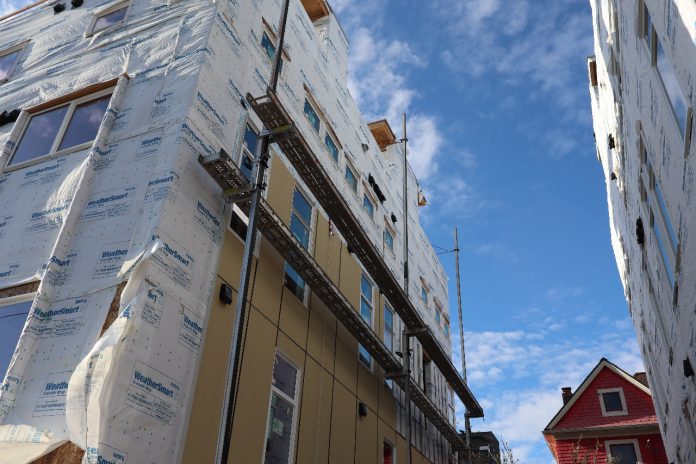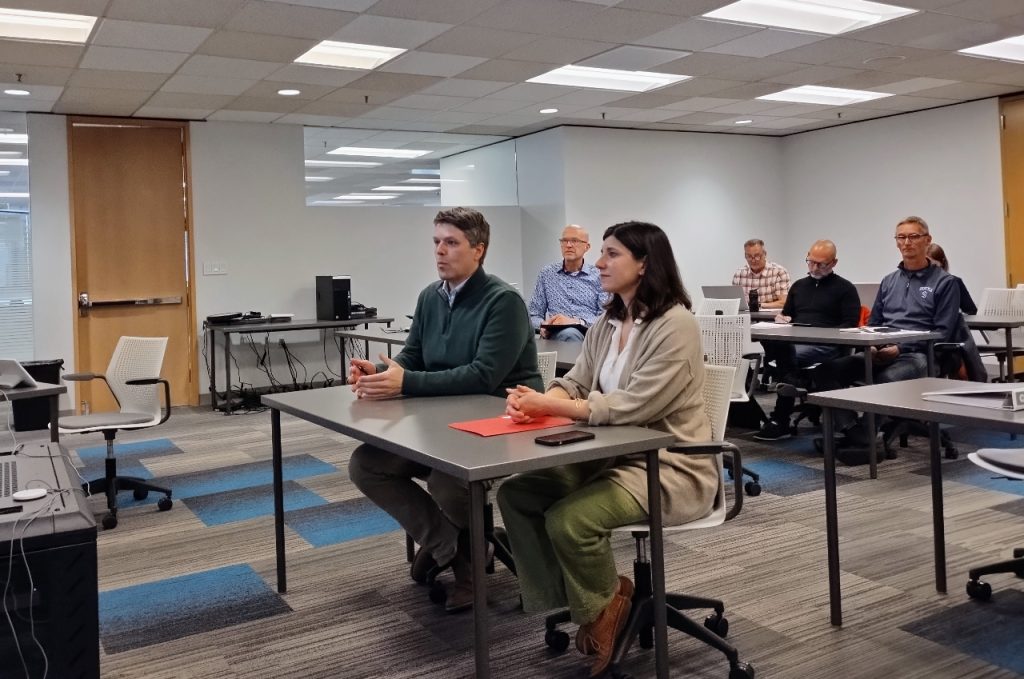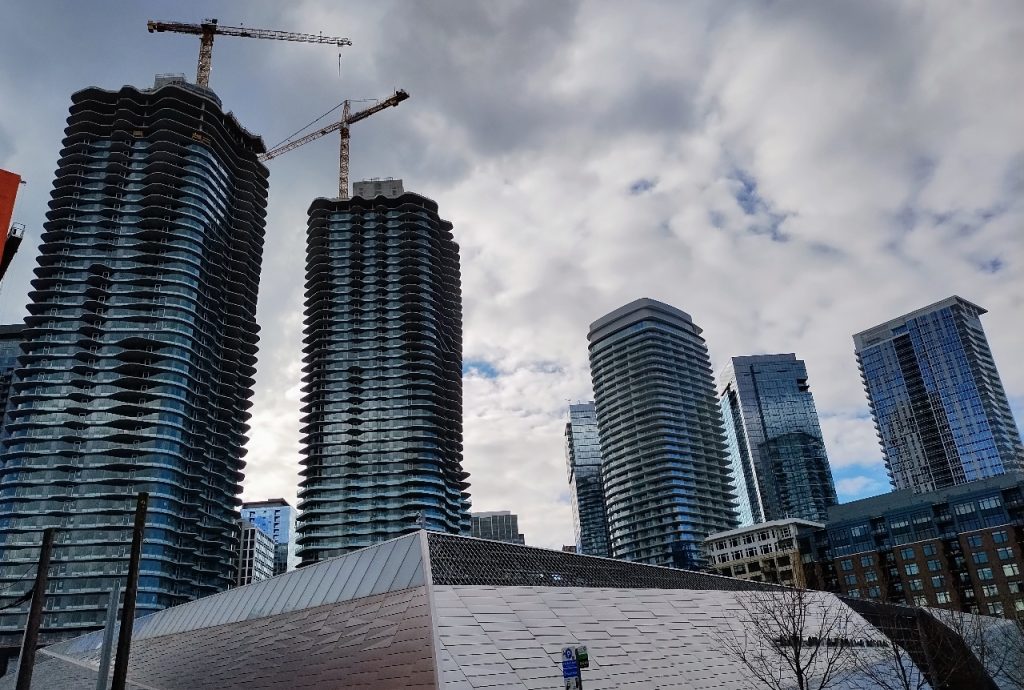
In an attempt to reduce construction costs and spur housing starts, Mayor Bruce Harrell is proposing that Seattle not implement a planned update to its multifamily and commercial building energy code, originally set to take effect later this year. The change would represent a break from past practice, in which Seattle has adopted a more stringent energy code than the statewide standard, setting a trend of increased energy efficiency that has ultimately pushed that statewide standard even further. Under this proposal, Seattle would only go so far as the 2021 Washington State Energy Code, which took effect just a few weeks ago elsewhere in the state, with some Seattle-specific changes.
This move, which could advance as soon as next month, comes after strong signals from leaders in the executive branch that they are interested in reducing hurdles to construction in areas of the city that currently allow apartment buildings. A move towards a more pro-housing approach, which so far has mostly manifested itself in the form of small, targeted upzones around Downtown and Belltown, comes as the Harrell Administration faces considerable pushback stemming from a reluctance to open up new areas of the city for denser growth, as part of the major update to the city’s Comprehensive Plan.
The standards for new buildings could come on the heels of an ambitious plan for emissions reductions in Seattle’s existing buildings, signed by Mayor Harrell late last year.
“We’ve heard from builders of homes, both affordable and market-rate, that there’s many things the city does that can make it harder to build our desperately needed housing,” Marco Lowe, Seattle’s Chief Operating Officer, told a city advisory board that oversees construction code updates this week. “We’re working on many different fronts, but one of the things we’ve heard is that that city energy code, when it first exceeded the state code, was a really necessary important step that led the way, but then over time as it’s become more and more efficient […] and this may be becoming something that we were hearing from building developers that was making it harder for projects to pencil.”
Lowe specifically mentioned a new requirement that at least 20% of a new building’s glazing be constructed out of high performance material, which usually comes in the form of triple glazing, along with the fact that some of the advanced mechanical systems that the city is poised to require are harder to maintain, and add significant cost on a per-unit basis.
Before being tapped to join the Harrell cabinet, Lowe worked as government affairs director at the Master Builders Association of King and Snohomish Counties, which has pushed for easing zoning restrictions and reducing red tape and fees on builders. Lowe’s pro-housing stands are familiar to anyone who has browsed his Twitter account, where he often openly questions the utility of the City’s Mandatory Housing Affordability (MHA) program, which requires builders in the city’s denser neighborhoods to include a certain number of on-site affordable units or pay a fee. Single-family homes are generally exempt from the fee.
At the construction code advisory board meeting, Lowe was joined by another Harrell cabinet member, Jessyn Farrell, the Director of the Office of Sustainability and the Environment, who also spoke in favor of making the change, while still leaving the door open for some Seattle-specific amendments that could get added in the next few weeks to retain specific provisions around energy efficiency. Farrell’s presence suggested that the City was ready to defend the environmental impact of a potential softening of its standards.

“We’ve really been a national leader and our code has been one of the key things that has actually pushed the state to adopt the most progressive state energy code across in the country,” Farrell said. “At the same time, we are in a deep housing crisis, and housing production is really challenged by rising construction costs, inflation, higher interest rates, and it’s had really profound impacts on a worsening housing crisis.”
Under the proposed changes, Seattle would adopt state standards except in the cases where Seattle’s 2018 code, the last one to be adopted, already exceeds those standards. The City doesn’t seem to be at risk of defying a long-standing city council resolution that requires Seattle’s energy code to be at least 20% more stringent than the national energy code.
Most of the people commenting at Thursday’s meeting were, unsurprisingly, developers and real estate professionals who were largely supportive of the change.
“The multifamily industry is more or less flat-lining right now,” testified Brian Runberg of Runberg Architecture. “Obviously, some of that’s due to interest rates. But there’s been other key factors that have been piling on for years in this industry, which has inherently higher risk, and lower margins.”
“The marginal benefits of ratcheting down Seattle’s energy code beyond the state code would be outweighed by the downsides caused by the costs that that will impose on multifamily housing developments,” Dan Bertolet of the Sightline Institute said in defense of the changes. “We all know that the single biggest source of climate pollution in our region is cars, and also that the best long-term solution we have for reducing carbon emissions is to build more housing in places with good options for transit, walking, and biking. Any cost added to development makes it less likely that housing will be built, and then less housing means higher average rents for everyone.”
There were a few skeptics in the (mostly virtual) room as well, with some climate hawks not fully convinced.
“We heard today that this policy would have a net benefit in terms of the level of housing being built, which we support, but we didn’t hear any serious cost-benefit analysis,” said Alice Lockhart of 350 Seattle, a climate advocacy group. “Before proceeding further, we really should have a non-anecdotal analysis of the increased climate emissions that would follow as well as the cost savings to developers and the expected effect on housing production.”

But it remains to be seen just how much pushback the proposal will receive from environmental groups concerned about walking back potential emissions reductions. Traditionally, Seattle has been much more eager to adopt policies around reducing building emissions than it has been to make moves around reducing transportation emissions, the city’s single biggest source.
The Seattle Department of Construction and Inspections (SDCI) Construction Codes Advisory Board is planning to solicit additional public comment on the proposed changes at its next meeting on June 6, with a potential vote scheduled for two weeks later on June 20. In between now and then, work is being done to determine just what specific provisions in Seattle’s code should remain in place. After that, the proposal will head to the city council for approval.
“This is an opportunity to make sure that we’re balancing multiple priorities around efficiency, around housing production, and really threading the needle,” Farrell said. “This is a unique moment in time where we’re grappling with a really profound housing crisis, and predictability across different policymaking arenas and levels of government is really important.”
Ryan Packer has been writing for The Urbanist since 2015, and currently reports full-time as Contributing Editor. Their beats are transportation, land use, public space, traffic safety, and obscure community meetings. Packer has also reported for other regional outlets including BikePortland, Seattle Met, and PubliCola. They live in the Capitol Hill neighborhood of Seattle.



